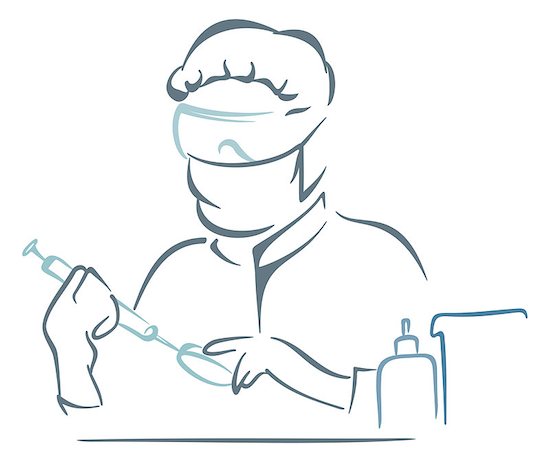Posts tagged HIV breakthrough

HIV DNA Successfully Removed from a Living Cell
HIV treatments have dramatically improved in recent years. Combinations of antiretroviral medications target the replicating of HIV within the body. When taken regularly, many HIV-positive individuals can lead relatively normal and healthy lives. As beneficial as these treatments are, researchers are still looking into finding an actual cure for the disease. One reason: if treatment happens to be interrupted, the virus quickly makes a comeback, and the infection can progress to AIDS. This is due to the latent HIV DNA within the cells.
Without the medications to suppress the virus, the infected cells are free to reproduce. Removing these viral pieces from the infected cells, and other areas where they lay dormant, is what would eradicate the infection.
HIV DNA: Gene Editing Takes the Next Step
In line with this objective, one recent study has successfully removed the HIV DNA from infected cells. The team had developed a sort of gene editor. The system works by targeting the infected cells and removing specific segments of HIV’s genetic material implanted by the virus.
When first tested, results were positive, and had little-to-no adverse effects. The most recent trial included targeting HIV material in organ tissue and blood cells. After just a couple of weeks, every type of tissue showed signs of the viral genetic material being removed. The broad spectrum of tissues gives hope that further developments will yield lasting and effective results, especially if gene editing is used in conjunction with current therapies.
Researchers are confident that if used alone, it has the potential to eliminate HIV from the body. Added benefits may come from using it along with antiretroviral therapies. Suppressing the virus’ ability to replicate, and removing its DNA from infected cells (even latent ones), will ensure a clean sweep. Seeing as the gene editing is also a very flexible technique, it is possible to tailor it to target mutated forms of the virus—an issue that continues to impede progress.
While the results from this study have years of trials and testing to go, it shows that medical objectives in regard to HIV and HIV DNA are feasible.

The Enzyme That Could Be Used Against HIV
HIV can now be managed as a chronic disease, largely due to modern antiviral medications. These medications target the enzyme, protease. Inhibiting the enzyme aids in preventing the infection from spreading within the body by slowing the maturing process. However, studies are now showing that the very enzyme that speeds up maturation can also destroy the virus if certain processes were to be delayed. This could mean that within a decade we will see a new generation of medications used to treat and manage HIV with potentially fewer side effects.
Halting the Spread by Activating the Enzyme Early
Once a cell is infected, a sort of bud forms from the cell. This sac-like structure contains viral particles that will soon become mature HIV. Once the bud is released, it is the protease enzyme that goes to work in order to morph the particles into a mature, infectious virus. Afterward, it floats around until a new, healthy cell is found and infected, thus starting the process over again. This then makes it understandable why the current therapies are aimed at stopping protease. Researchers have found, however, there are certain factors that, when changed, can cause the enzyme to activate prematurely. If this happens prior to the bud releasing from the host cell, it means the viral particles that were released will not be able to mature, and thus are not infectious.
When the protease activates before the bud releases, it causes a leak of proteins and enzymes into the host cell. Once the bud actually releases, there is no more enzyme to trigger the maturing phase. How does protease activate early? Everything works on the precise timing of events. The viral interaction with certain proteins is important to timing the release. Should an interaction be compromised, a delay can occur. The protease activates regardless of whether the bud has separated or not. With the release time delayed and the proteins gone, there is nothing left for the virus when the bud is finally detached, and it is rendered impotent.
Current medications can cause a spectrum of side effects that are often experienced. Therefore, many programs and studies are focusing on effective therapies with fewer side effects.

Simulations Provide Valuable Insight for HIV Research
It has become increasingly important for scientists to understand the life cycles of viruses such as HIV, Zika, and Ebola. Learning how these microbes develop aids researchers in their quest for effective vaccines and treatments. Interrupting the vital processes is one way to curb or halt infection. Efforts to probe deeper into the maturing of HIV has yielded helpful insight.
Watching HIV Mature Through Computer Simulations
Computer simulations of HIV were used to follow the maturing process of the virus to see how it infects the host. The biological system that was computer simulated broadened understanding, and possibly hastened the production of more effective antiviral drugs. While the simulations are not real life, scientists admit it comes very close to predicting actual events. Identifying stages of viral maturation is significant to researchers. With the computer-generated model, two main aspects of this process were identified.
Observing the Processes
The capsid is a protein-derived capsule that is crucial to viral development, and correlates to its ability to infect a host. They observed how it is formed, and that it contains the virus’ genetic material. When the virus infects a cell, a bud is formed on the surface of that cell. Within this particle are proteins and genetic material. This bud will break free and travel through the body. During this traveling time, the proteins are broken up. The resulting pieces pair up, and as they do, the capsid is formed and surrounds the RNA.
As this process occurs, there is constant motion and flipping around. According to researchers, this happens so that proteins are correctly oriented when they pair up, and it helps control the rate of the building process.
The complexity of these described processes had to be simplified for the simulations. However, the more information that can be gathered and programmed into the computer models, the more exact they become. Scientists are confident that similar models could be observed for other types of viruses that also have a capsid. The Ebola and Zika viruses are both included in this category. With enough information and understanding, developing ways to effectively treat these resilient infections may become possible in the future.
New Study Clarifies the Link Between HIV and Tuberculosis
The link between HIV infection and the progression of other conditions is still a bit of a mystery. This is certainly the case when it comes to the body’s inability to keep in check the bacteria that causes tuberculosis, while in the presence of HIV. However, new insight into how the connection between the two conditions work, and how the immune system comes into play, has recently been published. This information could lead to further understanding of how to best treat the two conditions and support important immune system functions.
A large percentage of the population has the bacterium that develops into tuberculosis in their system. The immune system is generally quite adept at keeping the pathogen under control. For those who have this bacterium and are also infected with HIV, the tendency is to eventually develop tuberculosis as the HIV progresses. It was generally assumed that a weakened immune system, brought about by HIV infection, was the reason behind tuberculosis development in infected patients. This is not necessarily the case.
How HIV Progression Affects Tuberculosis in the Body
The published information painstakingly compared what was happening during each stage of HIV infection—with the effect on the immune system. What researchers found was that in the early stages of HIV infection, a function of the immune system diminishes. That component, called IL-10, is used to reduce inflammation. As HIV progresses, interferon response is noted. This is an antiviral immune response, but it dampens defense against tuberculosis.
The imbalance of immune support when the two infections are both present seems to be what accounts for the progression into tuberculosis. It should also be noted that other dangerous conditions can present suddenly in such an environment. Regulating the imbalance is what researchers are hoping to achieve as they continue to examine their findings. If successful, they will be able to modify the responses of the immune system to effectively combat both pathogens. This is important research as it relates to helping HIV-positive individuals to deal with secondary diseases as HIV progresses.
New Look into HIV Cellular Infiltration
HIV is adept at making its way through cellular defenses in order to overtake the cell. Just how this happens has been the center of study for a long while. A better understanding of the processes involved can open doorways to keeping infections from spreading, or even occurring in the first place.
Cellular Infiltration and Cyclophilin A
The protein named cyclophilin A carries out numerous duties. It plays a key role in immune response, particularly when it comes to inflammation. Folding and sending off new proteins is also on its list of tasks. This protein is found in multiple tissues throughout the body. While much good is accomplished by cyclophilin A, too much of a good thing can be bad. In this case, conditions ranging from asthma to cancer can be responsible for the malfunction or overproduction of the protein. How does this relate to HIV and cellular infiltration?
HIV has an outer shell made up of proteins called a capsid. It is not known how, but the virus can dupe the cyclophilin A into creating a cover. This cloak binds to the HIV, which is then escorted into the nucleus of its cellular host. Once inside the center of the cell, the virus commandeers it. HIV then begins to copy its own genetic code, using the cellular mechanisms it overtook.
The picture painted by this information seems bleak, but there is a catch to the system. Like anything, balance is the key to success. The delicate systems cooperating together are likewise balanced in their own way. For example, researchers have found that too much of the protein can cause issues when binding to the virus. This can lead to a failed mission for the HIV. On the other hand, too little cyclophilin A, and the virus can be detected and destroyed by the immune system.
Now, scientists have the task of determining how best to use this new information in the fight against HIV infection. Having a better understanding of the inner workings can prove vital to developing new strategies against the virus, and the continued research is very promising.



